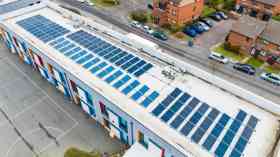Established in 1981, Micro Computer Consultants Limited (MCC Digital) are one of the UK’s most experienced Apple Authorised Education Speci
Supplier Focus
Latest Supplier News
Borg & Overström is a UK manufacturer of premium drinking water solutions. For over 20 years Borg & Overström has developed sustainable, bottle-less, hygienic, drinking water dispensers with the aim to provide exceptional, safe, self-service drinking water into schools, universities, workplaces and communal spaces.

 Just as schools get back to work after the summer break, the news comes that the public sector cuts first introduced in October last year are beginning to take their toll on public sector building. It’s been expected for some time, but the Construction Products Association’s (CPA) industry barometer, the Construction Trade Survey has unveiled a 50 per cent decline in public sector (non-housing) workload. That’s a significant fall in output and one directly linked to the government’s 60 per cent capital funding cuts announced last year, and it’s likely to cause concern for those in the construction industry and education sector alike.
Just as schools get back to work after the summer break, the news comes that the public sector cuts first introduced in October last year are beginning to take their toll on public sector building. It’s been expected for some time, but the Construction Products Association’s (CPA) industry barometer, the Construction Trade Survey has unveiled a 50 per cent decline in public sector (non-housing) workload. That’s a significant fall in output and one directly linked to the government’s 60 per cent capital funding cuts announced last year, and it’s likely to cause concern for those in the construction industry and education sector alike. 








